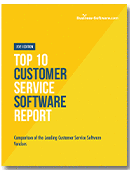Customer Service
Customer Surveys are Great. Unless you Ask The Wrong Questions

The chief technology officer of a company for which I occasionally do some work dug into his archives this past week and came up with a customer survey that was administered when this company was developing its first major product about 20 years ago. I regularly express concern that this company does an inadequate job of properly figuring out what its market really needs. As a result, it frequently falls into the trap of listening to a single prospect’s requirements and building products that ultimately prove to have a market of just one. So the CTO was pretty chuffed with his survey and was keen to show it to me and gain my affirmation that they had done the right thing.
The Problem with the Customer Survey
The survey was detailed and highly specific and gained responses from a large number of key prospects for the product the company was developing. But it asked only about which features the respondents wanted to see in the product and how robust they wanted those features to be. Where it failed was in not asking what problems the prospects needed to solve and which of those problems were painful enough that they would pay a lot of money to have them solved.
The result was an over-engineered product that cost more than most of the market was prepared to pay.
Henry Ford is supposed to have said that if he had asked his potential customers what they wanted, they would have told him, “faster horses.” Ford’s customers, like this company’s, could not articulate how their problem–in Ford’s case, a need for speed–could be solved in ways they could not yet describe, ways that had not yet been invented.
In Customer Surveys, Context is Everything
If you are developing a new solution to an existing problem, it does you little good to ask your potential customers what they want to see in your new product. They can answer only in the context of what they already know. If you try to get ahead of them and survey them on their desired feature set, you are sure to get a uniform more-is-better set of responses.
Far better to start your research with questions that get at the pain your customers are experiencing. What are their problems? How much are those problems costing them? What would be the gain if those problems were solved? Which solutions would create the greatest value? If you want to be forward looking, you can ask them about problems that are just on the horizon, or maybe even a little bit over the horizon, that they believe will be big pains a short distance down the road.
The Right Questions to Ask
When it comes to surveying them on what they need to see in your product, you need to tread very carefully. Every product is designed on a feature-cost spectrum, so you must be exacting in distinguishing between what is absolutely required and what would merely be nice to have. If a certain feature can be designed with various levels of robustness, what’s the minimum capability that must be delivered to create sufficient value such that the customer will buy it? If you make it more robust, will they pay more?
In the world of technology product development, your first product must provide a minimum set of capabilities that still create significant value for a large portion of your immediately addressable market. Ask your customers about what problems they most want to solve, and what they would be most willing to pay for, and you’ll be far better able to determine this initial minimum viable product than if you ask them about which features they want in it.
Looking for more information on customer service? Download Business-Software.com’s free Top 10 Customer Service software report, which include comparisons of the best help desk platforms on pricing, features, delivery model and more. For additional reading material, visit Business-Software.com’s Customer Service resource page.






